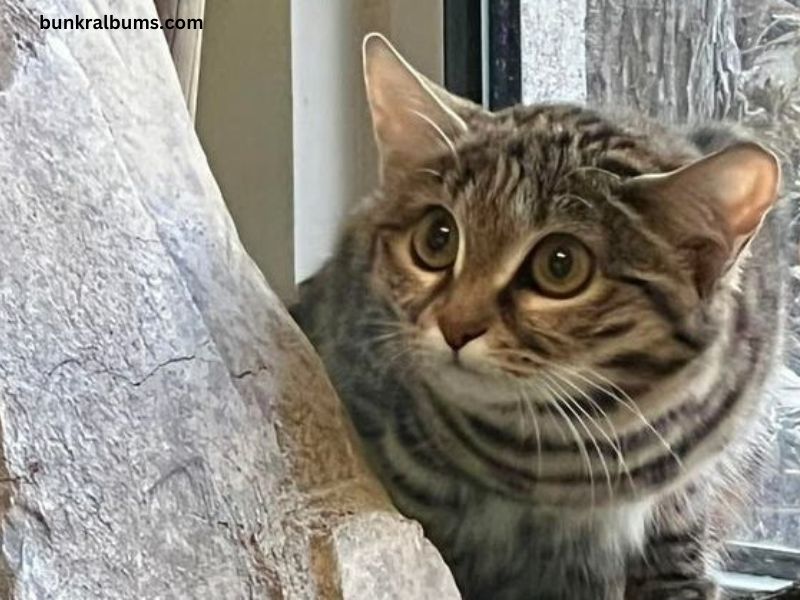Nestled in the heart of Salt Lake City, Utah’s Hogle Zoo offers visitors an opportunity to explore diverse wildlife, including a fascinating feline that often flies under the radar—the black-footed cat (Felis nigripes). This small yet captivating species, native to the arid regions of Southern Africa, has found a special home at the zoo, where conservation, education, and the wonders of nature come together.
Understanding the Black-Footed Cat
The black-footed cat is one of the smallest wild cat species in the world, weighing only 2 to 4 kilograms (4.4 to 8.8 pounds) and measuring about 40 to 50 centimeters (16 to 20 inches) in length. Characterized by its distinctive black paws, spotted coat, and large, expressive eyes, this feline is perfectly adapted to its environment. The black-footed cat’s fur provides excellent camouflage, allowing it to blend seamlessly into the grassy plains and scrublands of its native habitat.
Habitat and Range
In the wild, black-footed cats are primarily found in the southern regions of Africa, particularly in countries like Botswana, Namibia, and South Africa. They prefer open grasslands and savannas, where they can hunt small prey and find adequate shelter. This adaptability makes them a resilient species, although they face threats from habitat loss and human encroachment.
Diet and Hunting Behavior
The diet of the black-footed cat primarily consists of small mammals, birds, and insects. Remarkably, they are skilled hunters, often stalking their prey with a low profile before pouncing with incredible speed and agility. Their hunting technique includes a unique strategy of using stealth and patience, which is a testament to their evolutionary adaptations. One intriguing fact about black-footed cats is their high success rate when hunting; they can achieve a kill approximately 60% of the time, far higher than most other small cats.
Reproduction and Lifespan
Black-footed cats are solitary creatures, coming together only for mating. After a gestation period of about 63 to 68 days, a female typically gives birth to two to four kittens. The kittens are born blind and helpless, relying on their mother for food and protection during the first few weeks of their lives. As they grow, they learn essential hunting skills, gradually becoming independent by around three months of age. In the wild, the average lifespan of a black-footed cat is about 10 to 12 years, but in captivity, they can live longer due to the absence of predators and access to veterinary care.
Conservation Status and Threats
The black-footed cat is classified as “Least Concern” by the International Union for Conservation of Nature (IUCN); however, they still face numerous threats. Habitat destruction due to agriculture, urbanization, and human activities poses significant risks to their populations. Additionally, they are sometimes persecuted by farmers who view them as pests. Conservation efforts are crucial to ensure that these remarkable cats continue to thrive in their natural habitats.
The Role of Utah’s Hogle Zoo in Conservation
Utah’s Hogle Zoo plays a vital role in the conservation of wildlife through its participation in breeding programs and educational initiatives. By housing black-footed cats, the zoo contributes to the understanding and preservation of this species. The zoo’s staff members are dedicated to educating the public about the importance of conservation and the threats facing various species, including the black-footed cat.
One of the zoo’s key initiatives is its involvement in the Association of Zoos and Aquariums (AZA) Species Survival Plan (SSP). This program focuses on the breeding and management of species at risk of extinction, ensuring genetic diversity and population stability. The black-footed cat is one of the species benefiting from these coordinated efforts.
Educational Programs and Visitor Experience
Visitors to Hogle Zoo can learn about black-footed cats through various educational programs and exhibits. The zoo offers daily presentations, interactive experiences, and informative signage that highlight the unique characteristics and behaviors of these cats. Staff members often engage visitors with fascinating facts, sharing insights about the black-footed cat’s habitat, diet, and conservation status.
One of the most impactful experiences for visitors is the chance to observe the black-footed cat in its habitat. The zoo has designed its enclosures to replicate the cat’s natural environment, providing enrichment and opportunities for the cats to exhibit their natural behaviors. This immersive experience fosters a deeper appreciation for wildlife and the challenges they face in the wild.
Community Engagement and Support
Hogle Zoo is deeply committed to engaging the community in conservation efforts. Through events, workshops, and volunteer opportunities, the zoo encourages individuals and families to get involved in wildlife preservation. The zoo also partners with local schools to provide educational programs that inspire the next generation of conservationists.
By supporting the zoo through visits, memberships, and donations, community members contribute to the ongoing care of animals like the black-footed cat and help fund conservation initiatives that protect wildlife and their habitats. Each ticket sold helps ensure that Hogle Zoo can continue its vital work in education, conservation, and animal welfare.
The Importance of Awareness
Raising awareness about lesser-known species like the black-footed cat is essential for their conservation. Many people are more familiar with larger and more charismatic animals, such as lions and tigers, but the plight of smaller, less visible species often goes unnoticed. By shining a light on the black-footed cat and its unique qualities, zoos like Hogle are helping to educate the public and inspire action to protect these animals and their habitats.
Conclusion
The black-footed cat is a remarkable species that embodies the intricate web of life in Southern Africa. Its presence at Utah’s Hogle Zoo serves as a vital reminder of the importance of conservation efforts and the role that zoos play in educating the public about wildlife. By engaging with visitors and promoting awareness, the zoo is helping to ensure that the black-footed cat and countless other species continue to thrive for generations to come.
In the heart of Utah, the black-footed cat represents more than just a fascinating animal; it symbolizes the ongoing fight for wildlife conservation and the shared responsibility we all have to protect our planet’s diverse ecosystems. Through education, community engagement, and dedicated conservation efforts, Hogle Zoo is making a difference—one paw print at a time.







